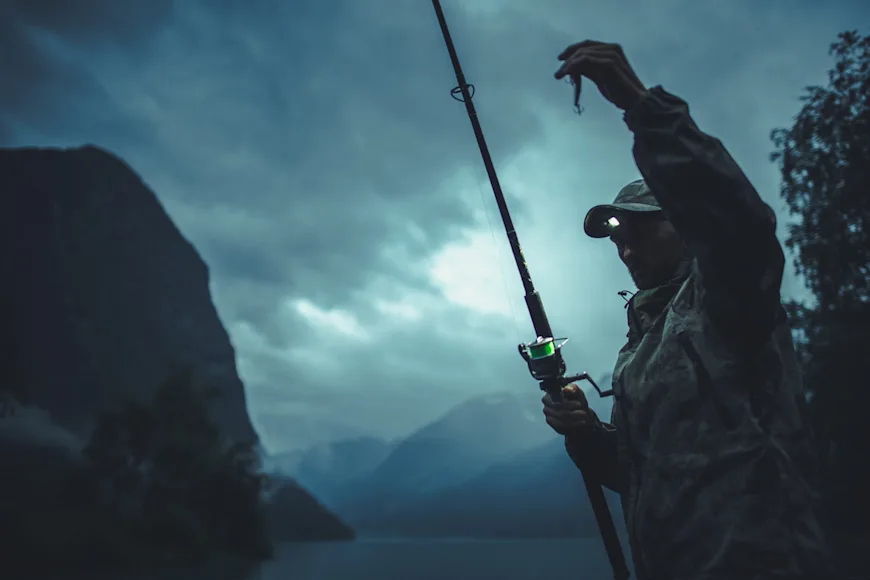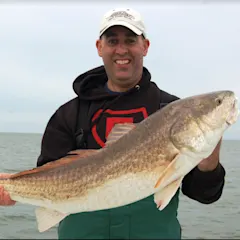Nothing ruins a bass bite faster than a personal watercraft ripping by at 50 mph. And nothing puts rising trout down quicker than a flotilla of tubers kicking and splashing their way down the river. There’s only one sure way to find tranquility on the water in summer: night fishing.
Big fish that hunker down on hot days often go on the prowl after sundown, because that’s when bait species that have been lying low begin to move. Some guides specialize in chasing fish after dark, and we debriefed a handful of them. Their tips and tricks are sure to help you become a master of the darkness. —Joe Cermele
Table of Contents
Night Fishing for Bass
Night Fishing For Trout
Night Fishing For Muskies
Night Fishing For Saltwater Fish
Night Fishing For Other Species of Fish
Night Fishing For Bass
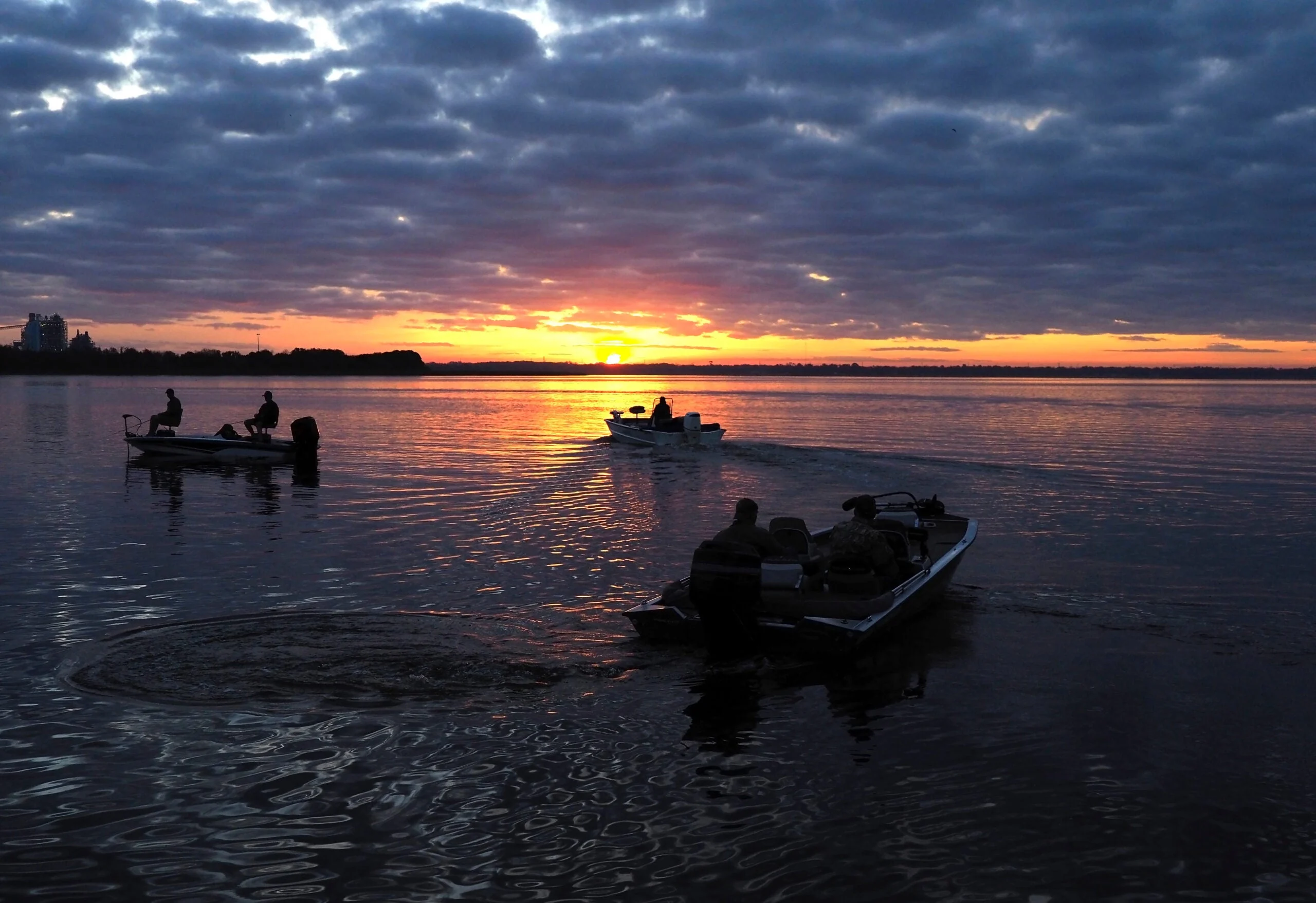
When the sun goes down, head out on the water for bass. sdbower via Adobe Stock
Rig Up the Lights For Smallmouth
According to veteran Tennessee guide Jim Duckworth, the biggest smallmouths in any lake head for the shoreline as soon as the sun sets. That’s because crayfish that have been hiding all day begin to stir now, and the bass know they can grab an easy meal. Duckworth quietly motors in on rocky banks and points, staying 70 to 90 feet away. Then he flicks on the black lights mounted on the sides of his boat. These purple bulbs illuminate only the first 30 to 50 feet of water, and they have nothing to do with attracting fish.
“I like to throw a 4-inch Berkley Chigger Craw
in black or blue up against the bank on a Texas rig,” Duckworth says. “The retrieve is no different than during the day, but I use 14-pound fluorescent monofilament at night, and the black light illuminates it close to the boat. As soon as you see the line move, you set.”
Night fishing with a black light and fluorescent line will make any angler a better daytime soft-plastic fisherman, Duckworth believes, because the system makes the take so visual. “You can’t miss a strike in the light at night,” he says. He claims the glow doesn’t turn off the smallies, and thanks to LED technology, there are several inexpensive black lights for anglers that don’t require hard wiring to the boat. Check out Optronic’s Rechargeable Wide-Angle Fishing Light. —J.C.
Feed a Rat to Bass at Night
At night, all kinds of critters dimple the water surface—insects, bats, amphibians, and rodents. Even if bass have never seen a swimming rat, the Spro BBZ-1 Rat
(complete with molded ears!) is so lifelike when it shimmies across the water that they’ll mistake it for a protein-packed meal. Reel the lure slowly, allowing the lip to dig a little, but not so much that it dives beneath the surface, and be ready for another (not-so-subtle) surface dimple: a smashing bass strike. —Pete Robbins
Night Fishing For Trout
Night Fishing for Trout on Still Water
Come September, big brown trout in lakes are on the move, looking for the perfect spawning habitat. They’re after a creek to run up, but even if none exists, they’ll still cruise near the shore, feeding heavily as they search. Most of this activity takes place in the dead of night, but if you’re willing to play in the dark, a well-presented stickbait can land you the monster brown you’ve been dreaming about. Here’s the routine
Nothing gets nighttime browns fired up like a stickbait waking across the surface. If a steady retrieve fails to draw explosive surface strikes, an occasional pause can turn an unseen follower into a biter. You’ll hear the bite before you feel it, so let the rod load before swinging. Browns often have lousy aim after dark and may miss a lure once or twice before connecting.
Big browns are less likely to enter the shallows and feed on the surface under the bright light of the Harvest Moon. Concentrate your efforts on cloudy nights, or nights surrounding the new moon.
Searching browns gravitate to mud bottoms and shoreline cover, but they really concentrate on where creeks enter a lake. Visit these areas after a rain, which increases the flow, and you’ll be casting to more fish.
Cast parallel to the shoreline or angling toward it. The trout follow the contour of the bank, and casts made at an angle (as opposed to straight out from the bank) will keep your bait in productive water for longer.
After-dark browns have a habit of swiping at a lure just as it’s about to be pulled from the water. Be sure to fish each retrieve all the way to the rod tip.
Brown trout will venture into inches of water at night. If the bank is clear, you won’t even need to get your feet wet. I’ve spooked enough fish on my first step into the lake that I now make it a habit to take a cast or two before even dipping a toe. —Jimmy Fee
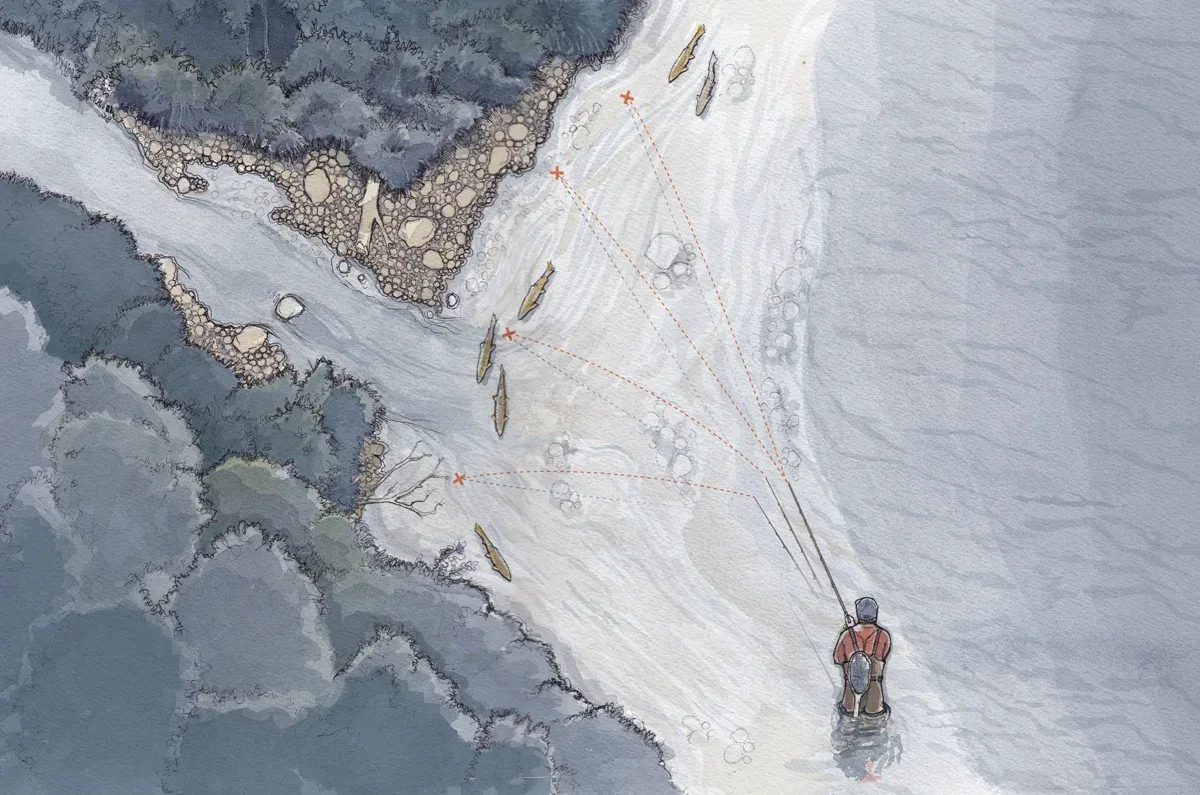
Focus on mud bottoms and shoreline cover. Mike Sudal
Use a Jitterbug for River Trout
Mouse flies at night might be all the rage these days, but what if you can’t even cast a fly line 20 feet in daylight? Grab a spinning outfit and tie up a Jitterbug. These classic topwater lures were made for bass, but if you know where to cast one, a big, mean brown trout will get sucked in by that unmistakable gurgle as fast as an old bucketmouth.
Jitterbugs shine on calm water, and lucky for you, quiet pieces of river with a little bit of depth are prime late-night trout-feeding haunts. Focus on the heads and tails of pools and long stretches of deep, slow water that don’t seem to have a lot going for them during daylight hours. Remember: Big browns might not live there, but they’ll travel a good distance to dine there at night.
To mimic a live mouse trying to swim in the current, launch upstream and as close to the opposite bank as possible and reel slowly. You want the lure to make a sweeping arc as it moves. And if you hear the surface erupt or even just hear that gurgle stop, wait for the rod to load before you swing. —J.C.
Drift a Dry Fly After Dark
Bushy streamers that splash and gurgle are the typical nighttime flies of choice for trout fishermen. For Delaware River guide Joe Demalderis
, though, night floats on this New York-Pennsylvania border water are all about catching big browns and rainbows on dry flies when he has the best pools to himself.
“At night, color doesn’t mean anything. It’s all about silhouette,” Demalderis says. “I’ll tie on a slightly larger size than what I use during the day, with a white wing that I can see.” An Adams or Royal Wulff dry in size 12 or 14 works particularly well. “Anchor in a slow pool just before dark. Once your eyes adjust, you’ll be able to pick out rises.”
Unlike a daytime approach, don’t try to lead a trout at night, Demalderis says. When you see a dimple on the surface, cast right to that spot. To make it easier, he recommends targeting fish rising 30 feet away or less and fishing on nights with plenty of moonlight. —J.C.
Night Fishing For Muskies
Slow Down Your Retrieve
Of the 145 muskie trips Minnesota guide Steve Scepaniak
runs on Lake Mille Lacs every year, 60 of them are night excursions. That’s because Scepaniak knows that in summer, when fishing pressure ramps up, your best shot at a 50-plus-inch ‘skie will come in the small hours of the morning. That’s when he breaks out the dual-blade Double Cowgirl bucktails
($25) and gives a lesson in speed control
“During the day, I’m usually telling clients to speed up the retrieve,” Scepaniak says. “At night, I’m telling them to slow down. Muskies don’t react to visual cues in the dark. They use their lateral lines to feel vibration, and slow-turning blades give off more of a thump.”
Because you want the blades on these giant spinners to just barely turn, fishing with them at night is subsequently less strenuous than it is during the day, when a fast burn is in order. Scepaniak targets the edges of weedy flats, as muskies lying near the bottom in deeper water move shallow by night. Most strikes, he says, come at boatside, and the trick to sticking the fish here is forgetting the figure eight that daytime fishermen execute with a short line before picking up the lure to recast.
“A fast figure eight during the day makes the fish think the prey is getting away, so they’ll attack,” says Scepaniak. “At night they can’t see the lure as well, so you want to execute a long, slow L turn along the boat instead, just to keep the blades moving.”
Don’t expect a strong take. Most muskies strike and keep moving forward with the lure, thus putting slack in your line, so any subtle tap is worth a hard set. Scepaniak also notes that muskies often hunt in packs after dark. He has hooked as many as four fish on back-to-back casts, so don’t spend too much time taking photos of your first one.
Hunt Monster Muskies in the Dark
Come summer, a lot of muskies feed only at night, so if you want to crank in your first 50-inch fish, break out the headlamp. Bait selection for night fishing is key. Lures with a steady, straight retrieve make it more difficult for the fish to miss in the dark. Your two go-to baits should be big: double 10 bladed bucktails and prop-style topwaters are both proven lure styles. Target the shallows, working both bucktails and topwaters over the weed tops. No need to burn baits at night. A slow, even retrieve triggers the best results. —Mark Modoski
Night Fishing For Saltwater Fish
Swing a Plug for Striped Bass
For New Jersey surf guide Eric Kerber
, summer success with nighttime stripers often means moving away from the main beach and targeting areas with current where nonmigratory bass stake claims during the hot months. Inlets–especially those with bridges–are his favorites, as a falling tide will draw forage from the bay to bass stationed near the inlet mouth or behind pilings. To fool them, Kerber casts out a black Bomber Long A
($9), but the retrieve of the shallow-diving hardbait comes later.
“If you can learn how to swing a plug, you’ll catch a lot more bass than you will just by reeling,” says Kerber. “I’ll cast upcurrent at a 45-degree angle, lock the reel, and never turn the handle. As the line comes tight in the current, the lure will dig and start swimming across the current on its own. To a bass, this looks like a dead, floating baitfish that suddenly came to life. It’s a real strike trigger.”
Even after his line completely straightens out, Kerber gives the lure at least 20 seconds of extra hangtime to entice any reluctant bass before retrieving for another cast. The trick after catching one fish is repeating the same swing again and again, as stripers will often congregate in a small area. If you swing short or wide of the mark, you won’t get a touch. —J.C.
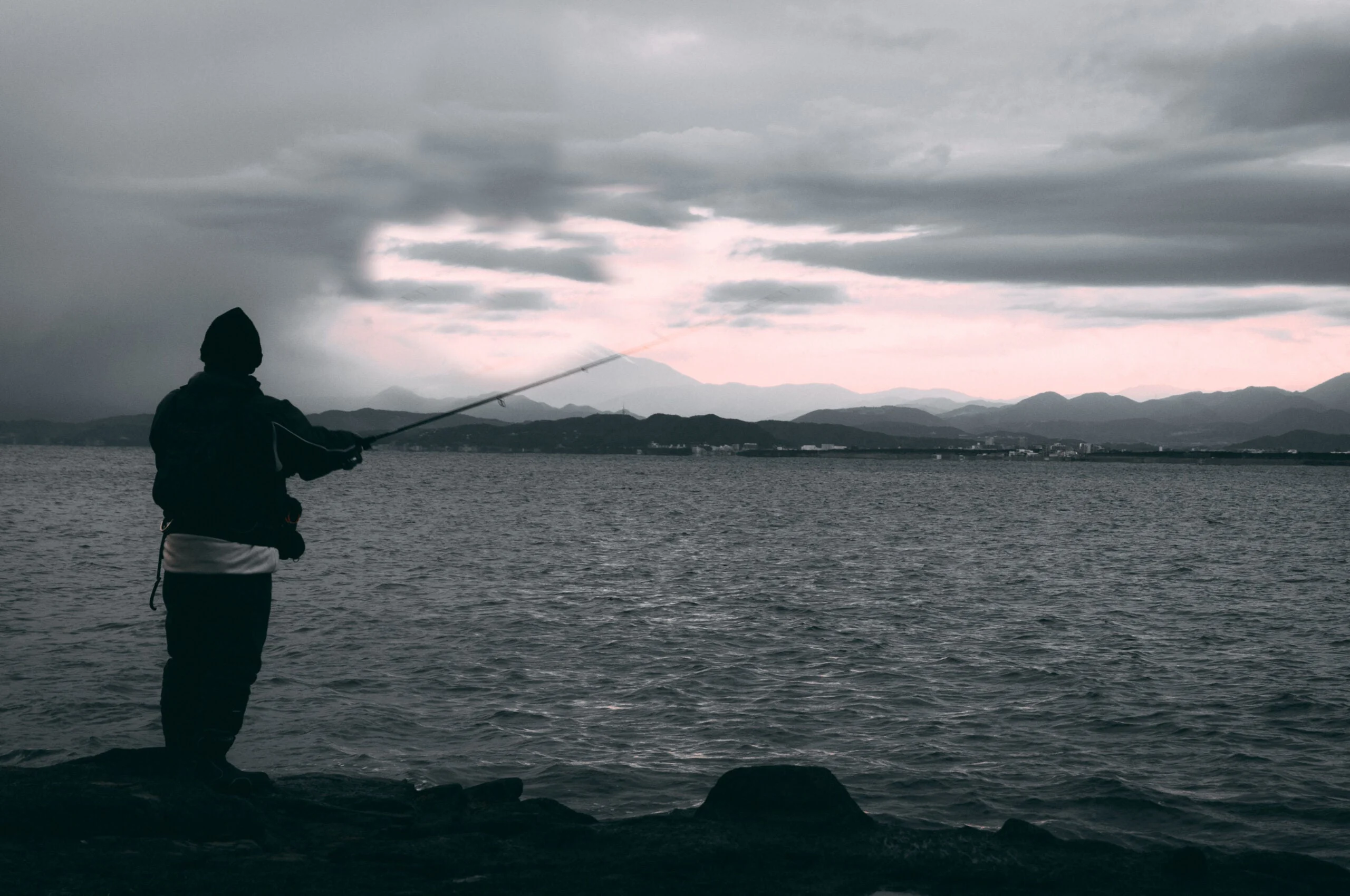
NAVAPON via Adobe Stock
Land a Late-Night Snook
“I always tell people a snook is like a mugger in an alley,” says Capt. Dave Pomerleau
. “It will just hide in the shadows, waiting for prey to pass by. Then it bolts out and attacks.” Pomerleau spends up to 280 nights a year pulling these “muggers” out of the many aquatic “alleys” in Florida’s Sarasota Bay, and the biggest he’s landed was an unofficial state-record 44-pounder.
Snook are naturally nocturnal feeders, and Pomerleau bases a hunt around tidal flow. These fish prefer to let the tide bring a meal to them, and they’ll use any structure that breaks the current–particularly dock pilings and bulkheads–as ambush points. A high outgoing tide is best; a slack tide hardly ever produces fish. If you find a lighted dock that creates a strong shadow in the water, you’ve hit big-snook pay dirt, but fooling a fish hiding under the boards boils down to proper presentation.
“The worst thing is to pitch a bait directly to the spot the snook is likely holding in,” Pomerleau says. “You have to cast uptide and let the bait naturally move down into the light. If it doesn’t get attacked in three or four casts, either the fish isn’t there or it’s not going to eat.”
Pomerleau opts for a live pinfish or finger mullet pinned through the nose with a 4/0 circle hook and rigged weightless on a 30-inch length of 40-pound fluorocarbon. The heavy leader will withstand abrasion on pilings and on a snook’s sharp gill plate. When a snook does grab the bait, it’s critical to fight it with the rod first and the reel second, because low, severe rod angles are often necessary to get the fish away from the structure. —J.C.
Night Fishing For Other Species of Fish
Rig Glowing Limb Lines at Night for Catfish
One hot summer evening, my buddy Will Robey called me up and spoke as quietly as if he were colluding with the Russians. “I have built something special,” he said. “Bring a fillet knife. I already have a bucket full of pumpkinseed bream for bait.” Robey had perfected a glow-in-the-dark limb line. He shrouded it in secrecy for fear that the glow would attract thieves to our flatheads. But he never said “off the record” when sharing his design with me. Here’s the secret:
Trotline Cord: You need 2 feet of 200-pound-test for a leader, and 6 to 10 feet for tying the rig to a limb.
Heavy Barrel Swivel: Join the lines with a swivel to keep thrashing cats from twisting the hook loose.
Egg Sinker: Two ounces of lead above the swivel keeps your bait in the strike zone.
Trailer Reflector: Trailer reflectors threaded onto the line provide a convenient place for writing your legally required information, and they also allow you to check your lines at night from a distance with a Q-Beam. When you see that flashing light, don’t fret—it’s a catfish, not a cop.
Heavy Hook: Use a 6/0 Kahle hook (or larger if you’re expecting mammoth flatheads), tip it with a lively baitfish, and tie it to an overhanging green limb larger than your thumb but smaller than your wrist. —Will Brantley
**Read Next: The Best Headlamps for Fishing of 2023
**
Catch a Crappie in the Dark
Once guide David Berry
finds a good brushpile along a creek channel in Tennessee’s Cherokee Lake, on come the lanterns hung in the four corners of his pontoon boat. While the lights attract any baitfish in the area, Berry says they do not attract crappies the way many anglers think
“The water in summer is hot, and the sun’s going down isn’t enough to cool the surface,” Berry says. “I often find the fish holding in 20 or 30 feet of water. Sometimes they rise in the lights, but sometimes they stay deep. The lights just get the baitfish active, so the crappies get more active.”
Berry sets up his clients with a double rig that has a jig with a fluorescent grub on the bottom and a live minnow on top. They lower it to the brush and slowly reel up until they connect with a crappie, counting handle turns to mark the depth of the bite. Some nights, however, the lights can actually make the crappies spooky. That’s why Berry only uses lanterns that let him dim the glow, drawing the edge of the light closer to the boat. This creates more dark area but still keeps the baitfish around. “What’s great about fishing in the lights is that you never know what you’ll catch,” he says. “Crappies are the target, but we catch catfish, largemouths, and bluegills all night, too.” —J.C.
Night Fishing for Walleyes
The biggest problem tourney pro and Michigan guide Mark Martin
has with nighttime walleye trips during summer is daytime water traffic. “The boats grind up the weeds and they’ll float to the surface,” he says. “Then at night it’s hard to get a clean trolling run.”
To combat the snot, Martin spools with 20-pound FireLine. He knows it’s overkill, but the thin superline will both cut through the surface weeds and allow him to free any weeds that do stick with a quick flick of the line. Clearing your line the same way when trolling stretchy mono is almost impossible. Clean runs are important, because your first pass on any spot is likely to produce the heaviest walleye, Martin says.
“Big walleyes are spooky,” he says. “At night I’m only trolling 10 feet of water on breaks near flats. If they feel the vibration from the boat, they’ll leave. You’ll still catch fish, just not the big ones.”
Martin’s first choice on the night troll is a size 13 Original Floating Rapala
($10). He’ll run four different colors to find out which produces best, and he strives to troll with the wind to reduce hull slap. —J.C.

